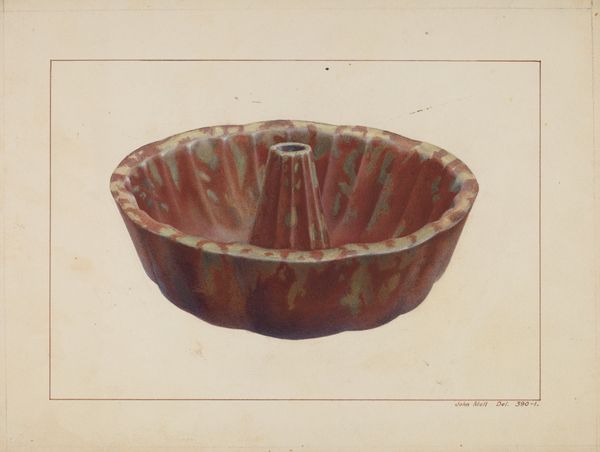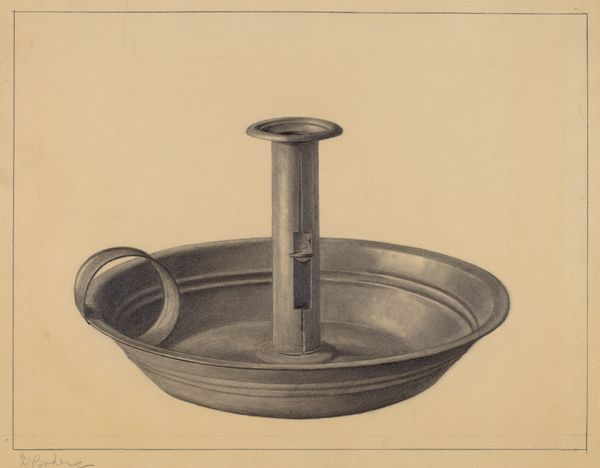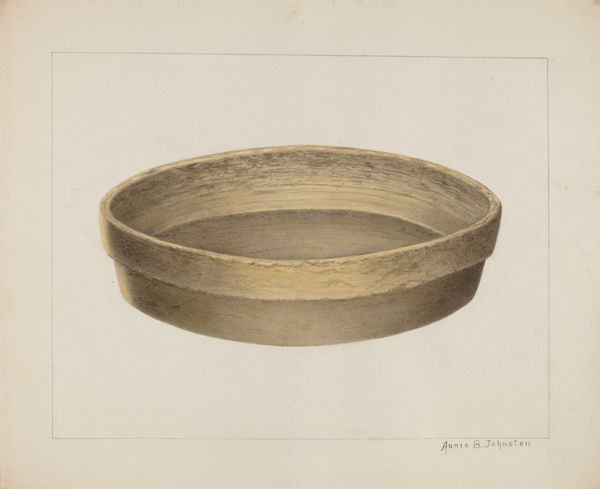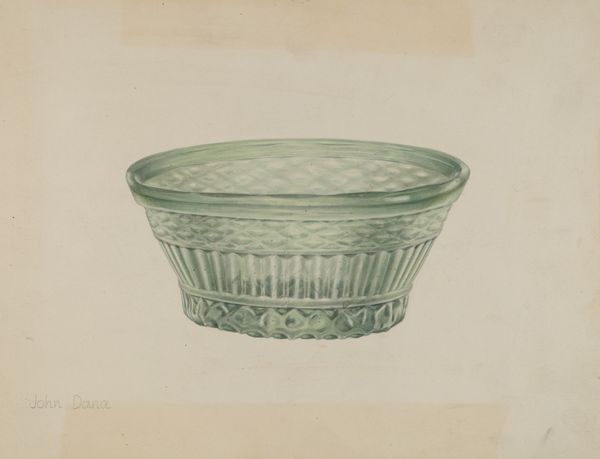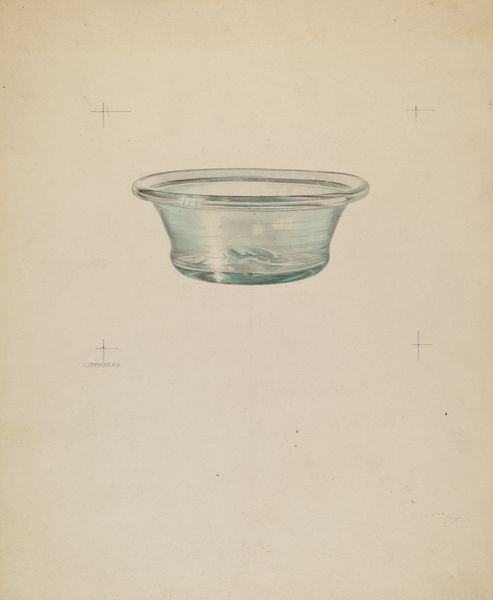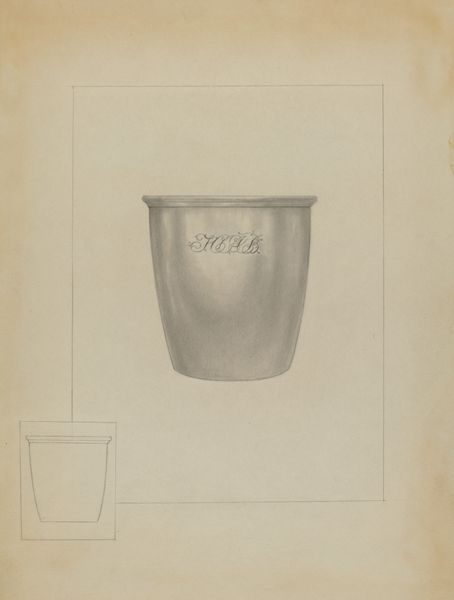
drawing, paper, watercolor
#
drawing
#
charcoal drawing
#
paper
#
watercolor
#
charcoal
#
modernism
Dimensions: overall: 27.8 x 35 cm (10 15/16 x 13 3/4 in.) Original IAD Object: 7 1/8" Long (rim to rim) 7 1/8" Wide (approx) 5 1/2" Long base(approx)
Copyright: National Gallery of Art: CC0 1.0
Curator: Here we have Roberta Spicer’s drawing “Mold,” created around 1940, executed with watercolor and charcoal on paper. Editor: There’s a stillness, an almost melancholic weight to this lone bowl depicted. It reminds me of utilitarian objects cherished, objects weathered by use and time. Curator: It's intriguing, isn't it? The work encapsulates early Modernist tendencies, where everyday items find a new form and value through representation, reflecting shifts in class and consumer culture. Editor: And that stark simplicity... Bowls throughout history and across cultures often represent sustenance, nourishment, and even ritualistic cleansing. It appears devoid, implying scarcity, or perhaps reflecting the austerity of the period. Curator: That's insightful. Thinking about the artwork's moment of creation, with WWII looming large, such imagery of paucity resonates. The muted colors speak to that constraint too. What looks to be hand-molded also introduces notions of craft in the face of machine production. Editor: Absolutely. We also must address what isn’t shown: the artist chooses this angle, omitting details to draw our focus on its stark form, and subtly hinting toward universal meanings. Its humble posture suggests something primal, almost archetypal. Curator: Spicer certainly provokes introspection. Perhaps that stark simplicity forces one to confront notions of resilience during immense societal turmoil. We have only to recall the Great Depression followed swiftly by a global conflict... Editor: Indeed. And perhaps seeing the world now, a symbol of a bowl in muted gray tones reminds of global health challenges where questions of access and allocation echo from this representation of a seemingly humble bowl from decades past. Curator: Yes, reflecting upon Spicer’s "Mold" gives pause to consider themes of function, representation, and scarcity across the ages. Editor: Absolutely. It seems a vessel for countless reflections.
Comments
No comments
Be the first to comment and join the conversation on the ultimate creative platform.


